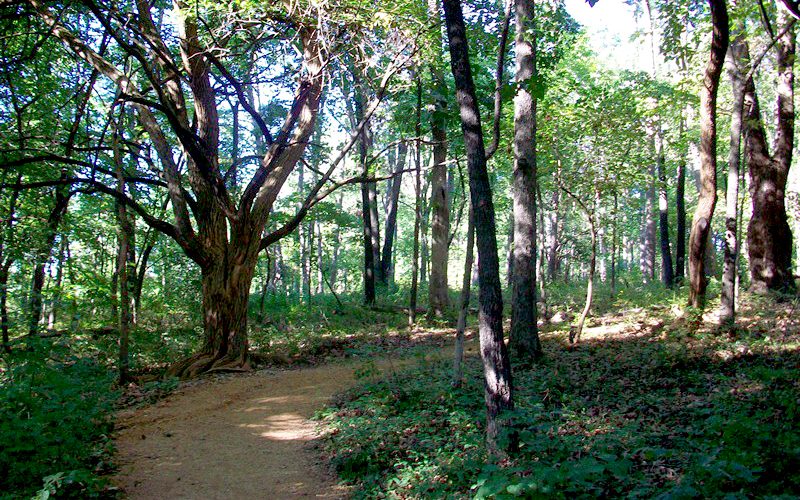
Staff Photo Amanda Bancroft
It’s possible to create a soft-surface nature trail in your backyard, like this one at Crystal Bridges. It may not be miles long, but could be great to explore what’s alive in your yard.
Gone are the days when people looked forward to mowing their lawn (if those days ever existed). The trend of monoculture yards has been replaced with ecosystem yards, in which neighbors compete for the snazziest-looking birdhouse and tastiest berries instead of the most level lawn. Many people are turning their yards into an entertainment venue that gives them an excuse never to mow again.
Others are just reducing their open lawn down to what their families truly need – space for a game of Frisbee or a romp with the dogs, for example. A little patch to watch the stars and have a picnic might be nice. But a personal golf course is no fun to mow repeatedly, and the decades are stacked against it. It’s much more fun, as one ages (or at any age, for that matter) to relax and observe all four seasons of wonder in the woods: the pollinators buzzing about their business, the baby mammals waddling after their moms, the woodpeckers hammering in the trees and the leaves falling to the ground in such a place that you know you don’t have to worry about raking them. This is the enchanted land of the woods in our backyard.
Don’t see any woods in your backyard? It’s OK – the woods are hiding there, waiting for you to stop mowing. They are waiting for your lawn mower to break for good, or for you to go on a long holiday. Then, the saplings and seedlings and wild things everywhere (yes, the weeds and invasive species, too) will spring up and shout their existence. Less mowing also creates greater water and air quality, benefiting communities.
However, there are homeowner’s associations, easements, laws, and the opinions of family members and neighbors to consider. Then there is the equally weighty question of what exactly you want to let grow where once your yard stood bare as the moon. Will you need to plant trees and remove invasive exotics? When will you begin your forest journey, and how will you manage your property in the years to come? And what, precisely, are your goals? Some folks want a nature trail twisting itself slowly among the oak trees. Others want more of an edible landscape; one that produces supplemental food for their family, but isn’t a large-scale farm. Often people want to grow Christmas trees or maple syrup or other things to sell which could cover any costs associated with planting and maintaining a forest.
The University of Maryland offers an online course titled “The Woods in Your Backyard,” which covers these questions, concerns, and details. Thousands of people have participated in their workshops since 2006. For more information and available books, just type “The Woods in Your Backyard” into an online search engine.
Amanda Bancroft is a writer, artist, and naturalist building an off-grid cottage for land conservation on Mt. Kessler. She and her husband Ryan blog about their adventures and offer a solar-hosted online educational center on how to make a difference with everyday choices at: www.RipplesBlog.org.










